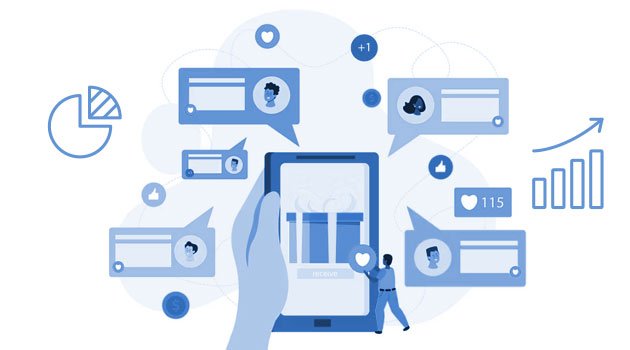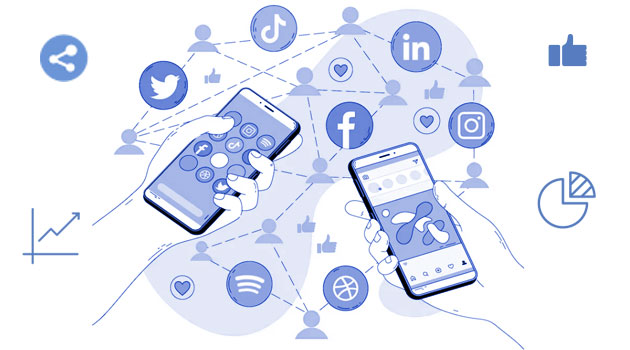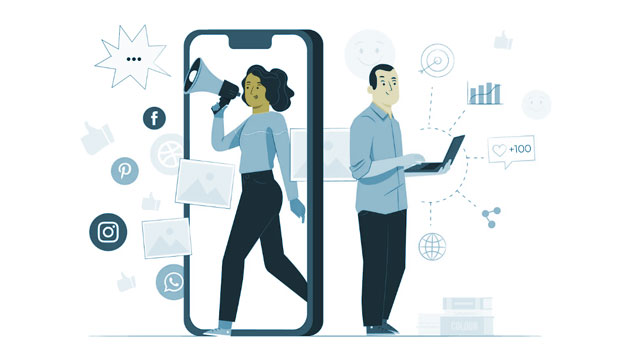
As we dive into the digital era, understanding customer behaviour has become an integral part of developing a successful business strategy. With rapid technological advancements and increasing competition, personalizing the customer experience is no longer a luxury but a necessity. In this blog post, we will explore the latest consumer behaviour trends and discuss how businesses can leverage these insights to create personalized experiences for their customers, both online and offline.
The Rise of the Omnichannel Experience

As customer behaviour evolves, so do their expectations. Today’s customers demand a seamless and consistent experience across all channels, both online and offline. This has given rise to the omnichannel approach, which aims to provide a unified and personalized experience throughout the customer journey.
To stay ahead of the curve, businesses need to integrate all touchpoints and ensure a smooth transition between different channels. This includes aligning marketing messages, product offerings, and customer service across various platforms, thus creating a consistent and personalized experience for customers. Online retailers must also learn how to blur the line between digital and in-store experiences to keep up with consumer demands.
The Power of Data-Driven Marketing

The key to understanding customer behaviour lies in the data. With an increasing amount of data being generated every day, businesses can leverage this information to gain insights into customer preferences, habits, and patterns. Data-driven marketing allows businesses to create targeted campaigns and tailor their offerings to meet the needs of specific customer segments.
To effectively utilize customer data, businesses must invest in advanced analytics tools and software, which can help them identify trends, predict future behaviour, and segment their customer base for more personalized marketing efforts.
Embracing Artificial Intelligence (AI) and Machine Learning (ML)

AI and ML technologies are playing a significant role in analysing customer behaviour and enhancing the personalization of customer experiences. By harnessing the power of these advanced technologies, businesses can quickly process vast amounts of data and identify patterns that would otherwise go unnoticed.
AI-powered chatbots, for example, can understand customer queries and provide personalized responses in real-time. Similarly, machine learning algorithms can analyse past customer interactions and predict future behaviour, allowing businesses to create highly targeted marketing campaigns and product recommendations.
The Growing Importance of Social Media

Social media platforms have become an essential part of the modern customer’s life, making it a valuable source of customer behaviour insights. By monitoring and analysing social media activity, businesses can gain insights into customer preferences, opinions, and concerns.
Moreover, social media platforms provide businesses with an opportunity to engage with their customers on a personal level. By actively participating in conversations, addressing concerns, and sharing valuable content, businesses can build strong relationships with their customers and create a personalized experience that resonates with their target audience.
The Shift Towards Experiential Marketing

Experiential marketing, which focuses on creating memorable experiences for customers, is gaining popularity to influence customer behaviour. By offering unique, engaging, and shareable experiences, businesses can create lasting impressions and foster customer loyalty.
To tap into this trend, businesses should focus on creating immersive, interactive, and emotionally engaging experiences for their customers. This could include virtual reality or augmented reality experiences, pop-up events, or collaborations with influencers and other brands. By offering unforgettable experiences that allow customers to connect with the brand on a deeper level, businesses can foster customer loyalty and turn them into brand advocates.
By incorporating experiential marketing strategies into their overall marketing mix, businesses can create memorable and shareable experiences that resonate with their target audience and influence customer behaviour. This not only drives sales and brand awareness but also helps businesses build long-lasting relationships with their customers.
Some successful examples of experiential marketing include:
Pop-up shops
Temporary retail spaces that offer customers a unique and exclusive shopping experience. These spaces can be used to launch new products, showcase limited edition items, or provide an immersive brand experience.
Interactive displays
Engaging and interactive installations in retail spaces or events that encourage customer participation and interaction. These displays can help customers understand the product better, create memorable moments, and promote social sharing.
Collaborations and partnerships
Working with influencers, celebrities, or other brands to create unique and exclusive products or experiences that cater to a specific audience. Collaborations can help increase brand exposure, reach new audiences, and drive sales.
Gamification
Integrating game elements into marketing campaigns or customer experiences to make them more fun and engaging. Gamification can motivate customers to participate, explore, and share their experiences with others, ultimately driving brand awareness and customer loyalty.
Understanding the Impact of Global Consumer Report Findings

As ecommerce continues to grow, it is essential for businesses to understand the evolving landscape of consumer behaviour. In the Global Consumer Report by BigCommerce, over 4,000 online shoppers from various countries were surveyed to uncover the major trends shaping retail today and in the future. One of the key findings was the significant importance of personalization in the customer experience.
The report revealed that 73% of consumers expect companies to understand their individual needs and expectations. Furthermore, 72% of consumers are willing to share some type of personal information in exchange for a personalized shopping experience. This presents a tremendous opportunity for online retailers to leverage customer data to create the best possible online experience and drive sales.
Balancing Data Privacy and Personalization

While customers demand personalized experiences, they also value their data privacy. It is crucial for businesses to strike the right balance between using customer data to create personalized experiences and respecting their privacy.
According to the EY Global Consumer Privacy Survey, most consumers prioritize secure collection and storage (63%), control over what data is being shared (57%), and trust in the company collecting their data (51%). This indicates that as data privacy awareness increases, security and trust become essential components of the customer experience.
Moreover, comfort levels in sharing personal information vary across generations. Younger generations like Gen Z and Millennials are more likely to share their data, while Gen X and Baby Boomers are generally more cautious. Businesses must take these differences into account and be sensitive to consumer comfort levels when choosing which customer data to use for personalization.
Implementing Personalization Tactics to Improve the Shopper Journey

To stand out, businesses should craft a personalized customer journey from website visit to the final purchase click. Here are eight effective personalization tactics to enhance the shopper journey:
Chatbots
Use chatbots and virtual assistants to provide 24/7 support and answer customer questions in real-time.
Product Recommendations
Recommend similar or complementary products based on a customer’s previous purchases to up-sell and cross-sell.
Continuous Shopping for Returning Customers
Allow returning customers to pick up where they left off, streamlining the shopping process.
Localized and Targeted Content
Personalize content based on language, region, preferences, and other demographics.
Retarget on Social Media
Re-engage prospective customers who left your site or abandoned carts with targeted ads on social media platforms.
Navigation Adjustment
Make the purchase process easier for frequent site visitors by adjusting the navigation based on previous purchases and site visits.
Personalized Emails and SMS Marketing
Engage and convert customers through abandoned cart messages, order follow-up emails, “We miss you” and “Thank you” messaging.
User-Generated Content
Foster brand loyalty by utilizing user-generated content such as photos, videos, and product reviews from customers.
Wagento: Your Partner in Decoding Customer Behaviour and Enhancing the Customer Experience
Seek Wagento’s expertise in analyzing consumer trends and leveraging personalization to enhance your brand’s digital presence and customer experience.
Conclusion

Understanding customer behaviour and personalizing the customer experience is vital for businesses in today’s highly competitive market. By leveraging advanced technologies and understanding consumer trends, businesses can create personalized experiences, driving growth and success.
Businesses can adapt by embracing omnichannel experiences, leveraging data-driven marketing, utilizing AI, ML, social media, and valuing authenticity.
Investing in personalization and addressing data privacy concerns helps businesses stay ahead and ensure an exceptional customer experience.







